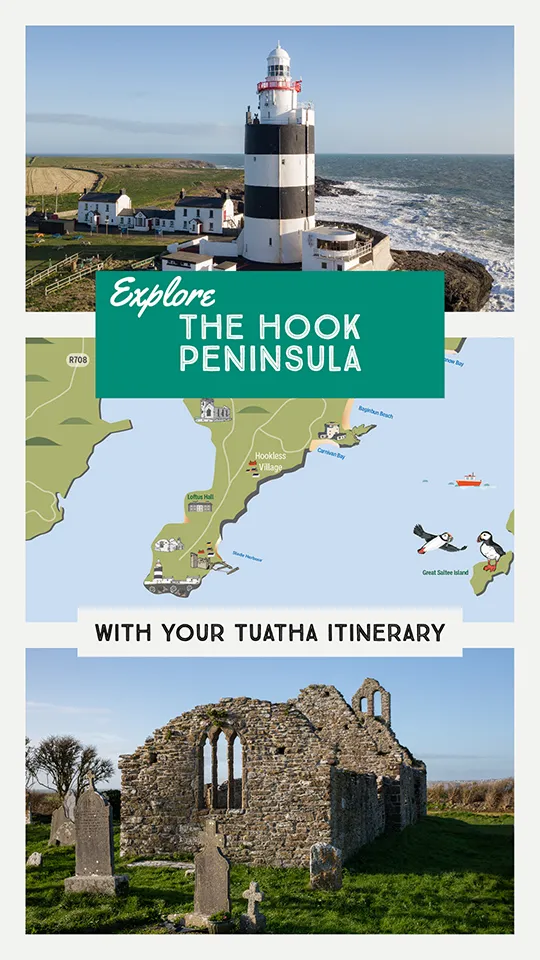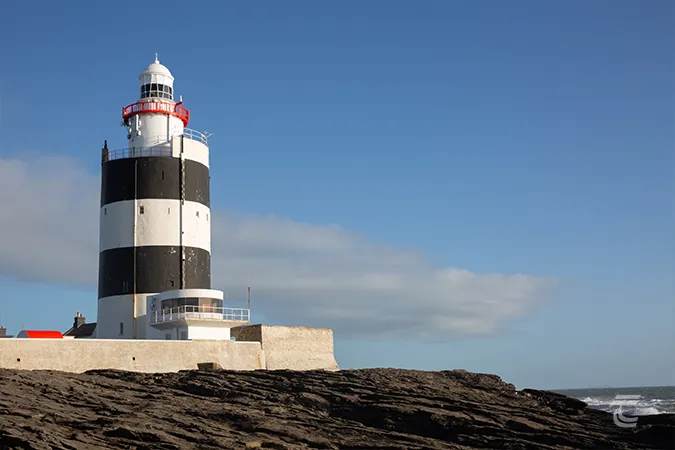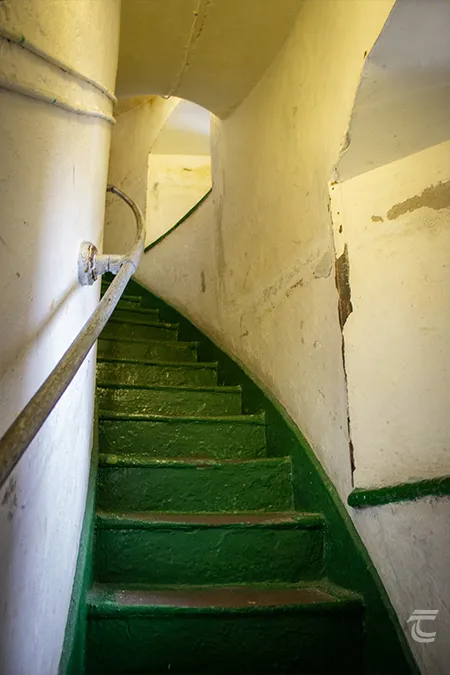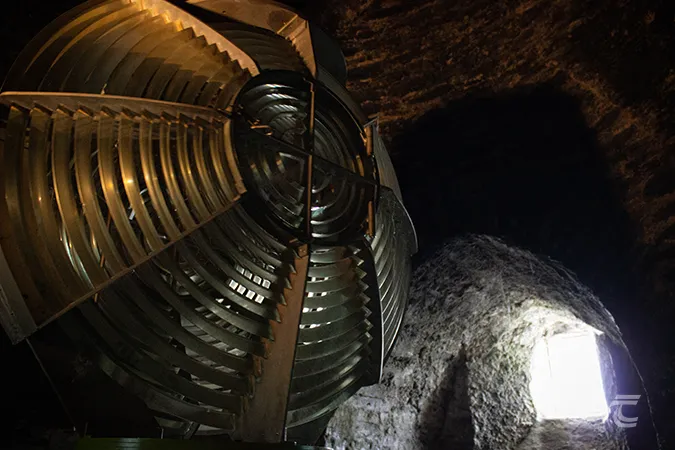Hook Head Lighthouse
Hook Head Lighthouse is one of the oldest operational lighthouses in the world. It is believed to have been first constructed by the powerful medieval magnate William Marshal in the early-13th century, some time between the years 1210 and 1230. The First Earl of Pembroke, William Marshal (1146–1219), was undoubtedly one of the most influential figures in Irish and British history. He was a renowned and fearless knight, and a prolific builder who established castles, towns and abbeys across his vast territories in Ireland, Wales, England and Normandy.
William Marshal had gained land and power in Ireland through his marriage to Isabel de Clare, the daughter of Aoife MacMurchada and Richard de Clare (known as Strongbow), the leading figure during the Norman invasions of Ireland. His close call with shipwreck that led to his foundation of Tintern Abbey, also provided him with a compelling case to make the navigation of this coastline safer. He ordered the construction of a tower to act as a landmark during the day and as a fire beacon at night. Marshal induced the monks of the nearby monastery at Rinn Dubháin to help to build the tower and to operate it as light keepers. They may have been following in the service of the founding saint, the 5th century Welsh monk St Dubhán, who is said to have kept a warning beacon blazing in the area where Hook Head Lighthouse stands today. It is from Dubhán that the peninsula got its original name, Rinn Dubháin, before being incorrectly Anglicised to Hook Head.
Marshal may have been inspired to build a lighthouse by examples he saw during his time on crusade in the late 12th century. Where he may well have seen the famous Pharos lighthouse at Alexandria, and the crusader lighthouse at Acre. The tower of the original 13th-century lighthouse is built in the style of the cylindrical style of a French donjon or keep, that Marshal would have been familiar with. He used a similar plan to build his circular towers at Kilkenny, Carlow and Ferns. The original tower stands around 25 metres (66ft) tall, and a large fire would have been lit on top of the tower in the medieval period. The establishment of the tower as a navigational aid and warning beacon, undoubtedly helped the development of New Ross as an important medieval trading hub. Indeed by the 15th century it was under the control of the people of New Ross.
For practical information about visiting this site Click Here
Hook Head Lighthouse is one of the oldest operational lighthouses in the world. It is believed to have been first constructed by the powerful medieval magnate William Marshal in the early-13th century, some time between the years 1210 and 1230. The First Earl of Pembroke, William Marshal (1146–1219), was undoubtedly one of the most influential figures in Irish and British history. He was a renowned and fearless knight, and a prolific builder who established castles, towns and abbeys across his vast territories in Ireland, Wales, England and Normandy. He had gained land and power in Ireland through his marriage to Isabel de Clare, the daughter of Aoife MacMurchada and Richard de Clare (known as Strongbow), the leading figure during the Norman invasions of Ireland. William Marshal’s close call with shipwreck that led to his foundation of Tintern Abbey, also provided him with a compelling case to make the navigation of this coastline safer. He ordered the construction of a tower to act as a landmark during the day and as a fire beacon at night. Marshal induced the monks of the nearby monastery at Rinn Dubháin to help to build the tower and to operate it as light keepers. They may have been following in the service of the founding saint, the 5th century Welsh monk St Dubhán, who is said to have kept a warning beacon blazing in the area where Hook Head Lighthouse stands today. It is from Dubhán that the peninsula got its original name, Rinn Dubháin, before being incorrectly Anglicised to Hook Head.
Marshal may have been inspired to build a lighthouse by examples he saw during his time on crusade in the late 12th century. Where he may well have seen the famous Pharos lighthouse at Alexandria, and the crusader lighthouse at Acre. The tower of the original 13th-century lighthouse is built in the style of the cylindrical style of a French donjon or keep, that Marshal would have been familiar with. He used a similar plan to build his circular towers at Kilkenny, Carlow and Ferns. The original tower stands around 25 metres (66ft) tall, and a large fire would have been lit on top of the tower in the medieval period. The establishment of the tower as a navigational aid and warning beacon, undoubtedly helped the development of New Ross as an important medieval trading hub. Indeed by the 15th century it was under the control of the people of New Ross.
For practical information about visiting this site Click Here
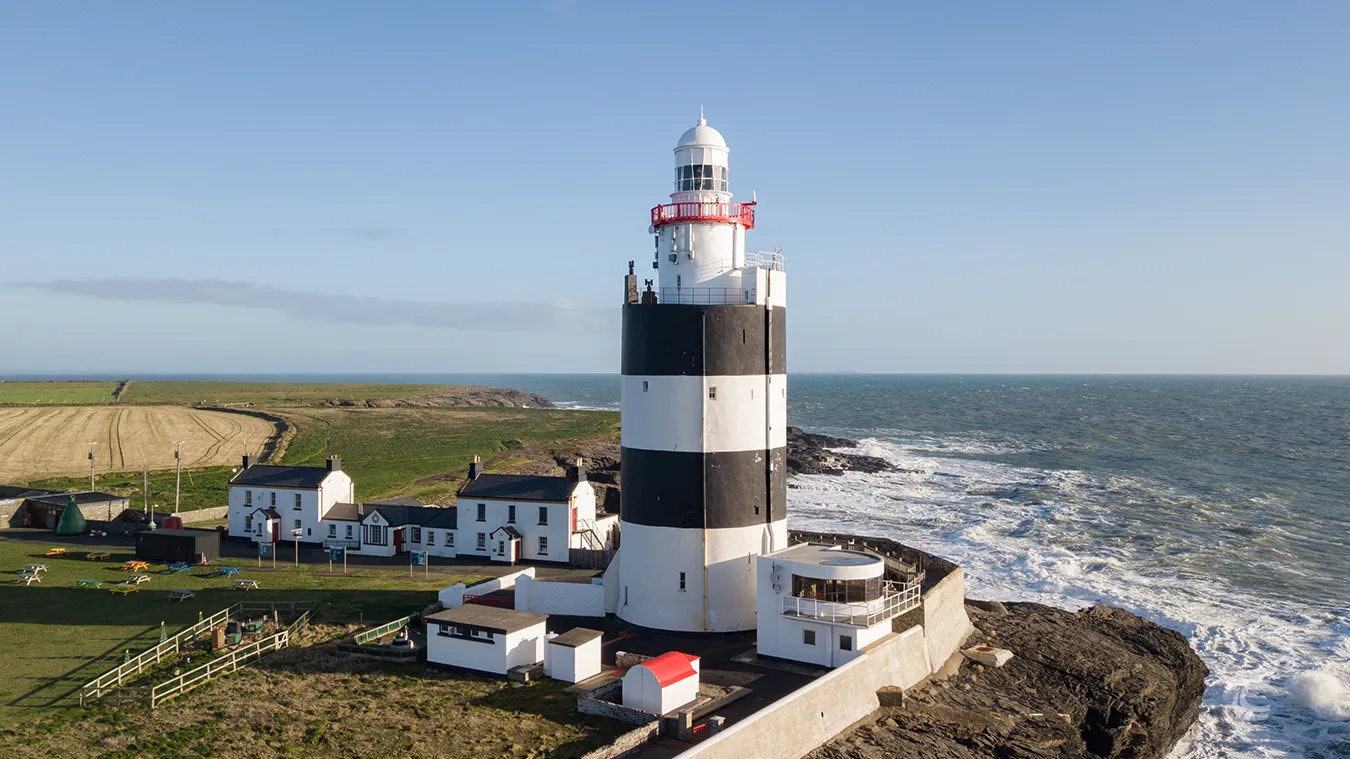
Hook Head Lighthouse • Wexford
The Later History of Hook Head Lighthouse
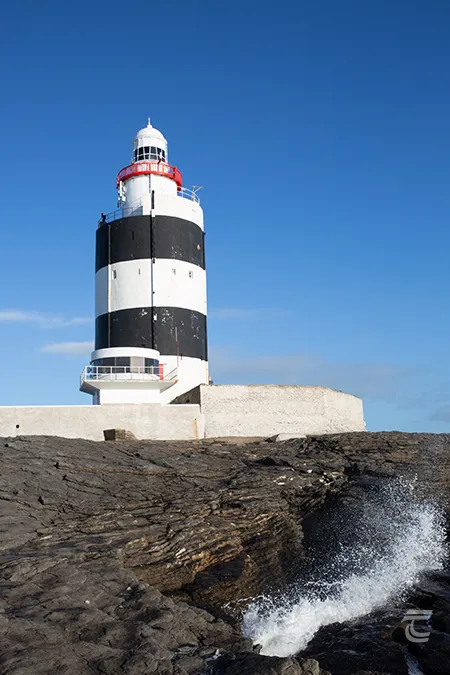
Hook Head Lighthouse • Wexford
Hook Head Lighthouse maintained its vigil without interruption until around 1641. We cannot be certain when exactly it ceased to be operational, but it was described in 1657 as ‘a former lighthouse’, suggesting it had fallen out of use for at least a period. The lighthouse was restored in 1671 by Robert Readinge, who encased the light in glass, and had it powered by coal. The lighthouse keeper and his assistant, together with their families, lived in the first and second floors of the building in quite crowded conditions. In 1791, the large lamp of the lighthouse was powered by whale oil, and the lighthouse was under control of the Ballast Office.
By the middle of the 19th century, new houses were constructed for the lighthouse keepers, and the distinctive black-and-white stripes became the identifier of the lighthouse. In 1867, the tower was handed over to the Commissioners of Irish Lights, who still operate it to this day. The lamps were first converted to gas, then paraffin and finally in 1972, to electricity. In 1996 following the installation of an automated system, the last lighthouse keeper left Hook Head Lighthouse. Today the lighthouse is a fascinating and unique place to visit, and the experience is made all the more rewarding by the scenery of County Wexford and the Hook Peninsula that surrounds it. You can explore this with our Hook Peninsula Itinerary, available exclusively for Tuatha Members here.
In addition to all that medieval heritage, you can also discover a much older story at Hook Head, as the rocky headland around the base of the lighthouse can be a good place to spot fossils. The rock is part of the Ballysteen Formation of limestone and shale, formed during the early part of the Carboniferous Period around 350 million years ago. If you have a sharp eye, in the right light you can see the remains of sea creatures and plants, like crinoids (related to starfish and sea urchins), lamp shells, corals and sea mats (lacy looking colonies of tiny sea creatures). But remember tampering or removing fossils is illegal here in Ireland, so please don’t interfere with these reminders of the time depth of Ireland’s natural and geological heritage.

Hook Head Lighthouse • Wexford
Upper left: The lighthouse • Lower left: the great light • Right: the staircase leading to the light
Top: The lighthouse • Middle: the staircase leading to the light • Bottom: the great light
